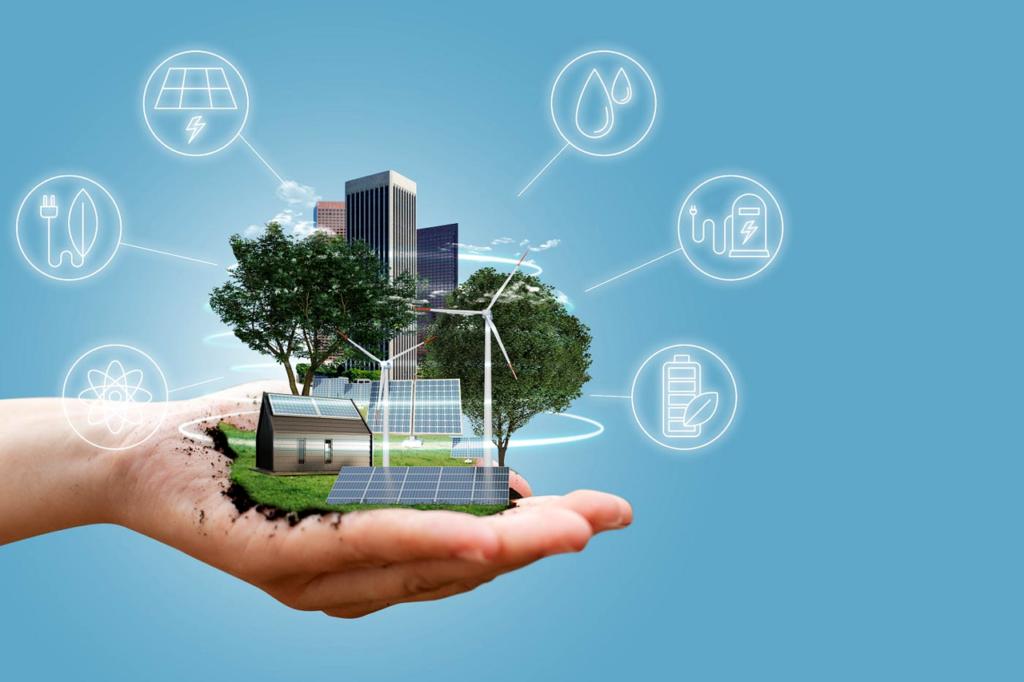In today’s rapidly evolving world, the importance of embracing sustainable practices has never been more apparent. As concerns about climate change and environmental degradation continue to escalate, there is a growing recognition of the need to transition towards cleaner, more eco-friendly technologies. This is where green technology, also known as clean technology or environmental technology, comes into play. In this article, we will explore the role of green tech in paving the way for a sustainable tomorrow.
Read More: The UK Response to Climate Change: Tech Solutions for a Greener Future
Contents
- 1 The Evolution of Green Technology
- 2 Key Components of Green Technology
- 3 Benefits of Green Technology
- 4 Challenges and Limitations
- 5 Innovations Driving Green Technology Forward
- 6 The Global Impact of Green Technology
- 7 Role of Governments and Corporations
- 8 Case Studies and Success Stories
- 9 Future Trends and Predictions
- 10 The Importance of Individual Action
- 11 Education and Awareness Campaigns
- 12 FAQs
- 13 The Final Words
The Evolution of Green Technology

Green technology has come a long way since its inception. Initially spurred by environmental concerns in the late 20th century, it has evolved into a diverse field encompassing a wide range of innovative solutions aimed at reducing humanity’s ecological footprint. From early efforts to harness solar and wind energy to the development of sophisticated recycling processes, the evolution of green technology has been marked by continuous progress and innovation.
Key Components of Green Technology
At its core, green technology is focused on finding sustainable alternatives to traditional energy sources and manufacturing processes. This includes the widespread adoption of renewable energy sources such as solar, wind, and hydroelectric power, as well as the development of energy-efficient infrastructure and transportation systems. Additionally, green technology encompasses solutions for managing waste more effectively and utilizing eco-friendly materials in construction and manufacturing.
Benefits of Green Technology
The benefits of embracing green technology are manifold. From reducing greenhouse gas emissions and mitigating air and water pollution to creating new job opportunities and driving economic growth, the advantages of transitioning to a greener economy are clear. Moreover, green technology has the potential to improve public health outcomes by minimizing exposure to harmful pollutants and toxins.
Challenges and Limitations
Despite its promise, the widespread adoption of green technology faces several challenges. Chief among these is the issue of cost, as many green tech solutions require significant upfront investment. Additionally, outdated infrastructure and regulatory barriers can impede progress in certain sectors. Moreover, public awareness and acceptance of green technology initiatives remain a key concern, highlighting the need for education and outreach efforts.
Innovations Driving Green Technology Forward
Despite these challenges, there is cause for optimism thanks to ongoing innovations in the field of green technology. Breakthroughs in renewable energy, such as the development of more efficient solar panels and advanced battery storage systems, are making clean energy more accessible and affordable than ever before. Similarly, advancements in smart grid technology and sustainable urban planning are helping to build more resilient and resource-efficient communities.
The Global Impact of Green Technology

The global impact of green technology cannot be overstated. By reducing dependence on fossil fuels and promoting the use of renewable energy sources, green technology has the potential to significantly reduce greenhouse gas emissions and mitigate the worst effects of climate change. Moreover, by creating new opportunities for sustainable development, green technology can help lift communities out of poverty and improve the quality of life for people around the world.
Role of Governments and Corporations
Governments and corporations play a crucial role in driving the adoption of green technology. Through policy frameworks, incentives, and investments in research and development, governments can create an enabling environment for green innovation to thrive. Likewise, corporations have a responsibility to integrate sustainability into their business models and supply chains, reducing their environmental impact and contributing to the transition to a low-carbon economy.
Case Studies and Success Stories
There are countless examples of green technology projects making a positive impact around the world. From large-scale solar farms and wind turbines to innovative recycling initiatives and sustainable transportation systems, these projects demonstrate the potential of green technology to transform industries and communities. By highlighting these success stories, we can inspire others to embrace green technology and work towards a more sustainable future.
Future Trends and Predictions
Looking ahead, the future of green technology appears bright. As technology continues to evolve and become more affordable, we can expect to see even greater advancements in renewable energy, energy storage, and sustainable infrastructure. Moreover, the integration of artificial intelligence and machine learning holds the promise of optimizing resource allocation and driving efficiency across various sectors.
The Importance of Individual Action
While governments and corporations play a crucial role in promoting green technology, individual actions also matter. By making simple changes to our daily routines, such as reducing energy consumption, minimizing waste, and supporting sustainable businesses, we can all contribute to the transition towards a more sustainable future. Every small action adds up, and together, we can make a difference.
Education and Awareness Campaigns

Education and awareness are key to driving widespread adoption of green technology. By promoting environmental literacy and empowering communities to take action, we can build momentum for change and create a culture of sustainability. From school programs and community workshops to public awareness campaigns and online resources, there are countless opportunities to educate and inspire others to embrace green technology.
Read More: Environmental Tech: Solutions for a Sustainable Future
FAQs
- What exactly is green technology? Green technology, also known as clean technology or environmental technology, refers to innovative solutions designed to address environmental challenges and promote sustainability.
- How does green technology contribute to combating climate change Green technology helps reduce greenhouse gas emissions by promoting the use of renewable energy sources, improving energy efficiency, and implementing sustainable practices in various industries.
- Are there any drawbacks to implementing green tech solutions While the benefits of green technology are significant, challenges such as cost considerations, regulatory hurdles, and public awareness remain barriers to widespread adoption.
- What role do governments play in promoting green technology? Governments play a crucial role in driving the adoption of green technology through policy frameworks, incentives, and investments in research and development.
- How can individuals contribute to the adoption of green technology Individuals can support green technology by making sustainable choices in their daily lives, advocating for environmental policies, and supporting businesses that prioritize sustainability.
The Final Words
Green technology holds the key to a more sustainable tomorrow. By harnessing the power of innovation and collaboration, we can address the pressing environmental challenges facing our planet and build a cleaner, healthier future for generations to come. Whether through government policies, corporate initiatives, or individual actions, we all have a role to play in shaping the transition towards a greener, more resilient world.




